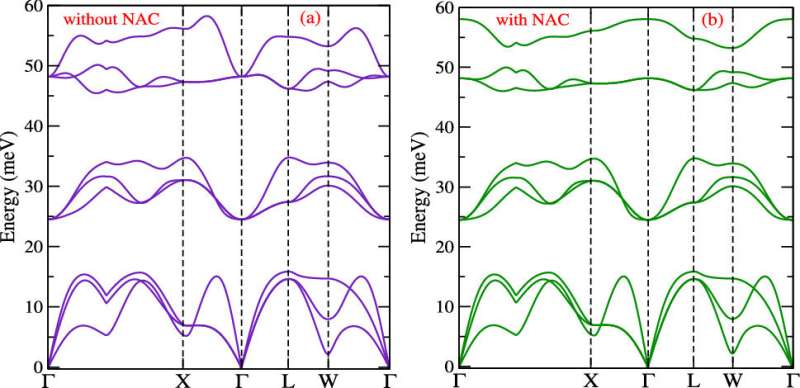This article has been reviewed according to Science X's editorial process and policies. Editors have highlighted the following attributes while ensuring the content's credibility:
fact-checked
peer-reviewed publication
trusted source
proofread
Calculating thermal properties from phonon behaviors

A new study determines the thermal properties of advanced solid materials, based on first-principles calculations of quantum vibrations.
As the energy demands of our modern world continue to grow, there is a crucial need to understand how heat flows through the materials we use to build our technology. Through new research published in The European Physical Journal B, Vinod Solet and Sudhir Pandey at the Indian Institute of Technology Mandi have accurately estimated the thermal properties of a particularly promising alloy, based on first-principles calculations of phonons.
Composed of scandium (Sc), silver (Ag), and carbon (C), this alloy could soon become a key component of devices which convert heat into electricity, while its low reflectivity and strong photon absorption would make it especially well-suited for highly efficient solar cells.
Phonons are quantum particles which represent the smallest units of vibrational energy in a solid, or 'quantum' of heat in other words. They are a key driver of the heat-related behaviors of solid materials like ScAgC: governing properties including their thermal expansion, and the rate of heat conduction through their molecular lattices. While these effects have been widely explored in previous studies, they still haven't been studied theoretically through first-principles calculations of phonon behaviors.
In their study, Solet and Pandey made these calculations by accounting for interactions between phonons and features including lattice boundaries and defects, as well as other phonons. This enabled them to estimate both ScAgC's thermal expansion and the thermal conductivity of its molecular lattice, far more accurately than would have been possible through previous techniques.
The duo hopes their results will now pave the way for new studies into the phonon-based properties of SgAgC, as well as other materials in the related family of Heusler compounds. With the ability to calculate these properties from first principles, they could ultimately be enhanced even further—potentially leading to a new generation of cleaner, more energy-efficient technologies, based on advanced thermoelectric materials and solar cells.
More information: Vinod Kumar Solet et al, Ab initio study of phononic thermal conduction in ScAgC half-Heusler, The European Physical Journal B (2023). DOI: 10.1140/epjb/s10051-023-00524-z
Journal information: European Physical Journal B
Provided by Springer





















